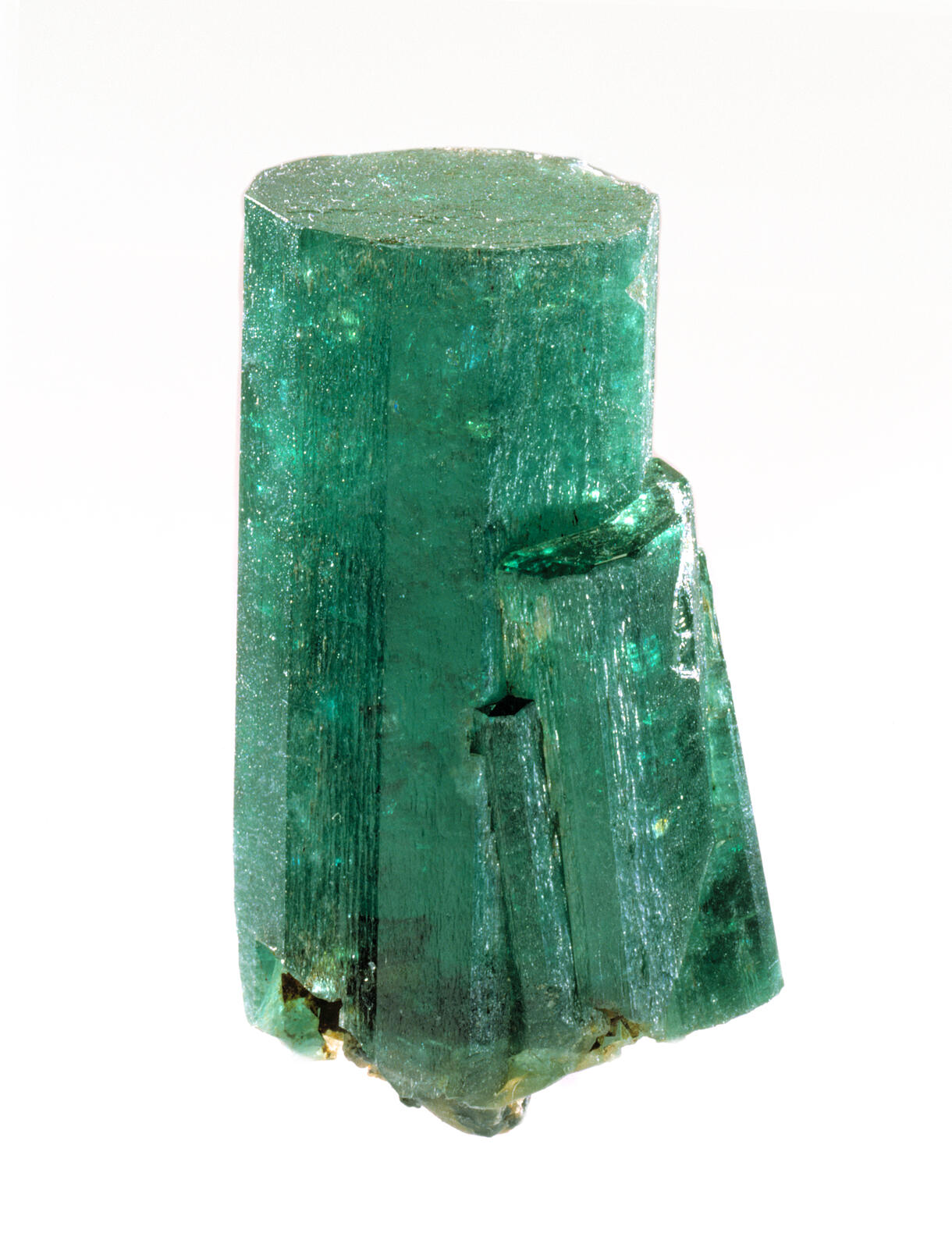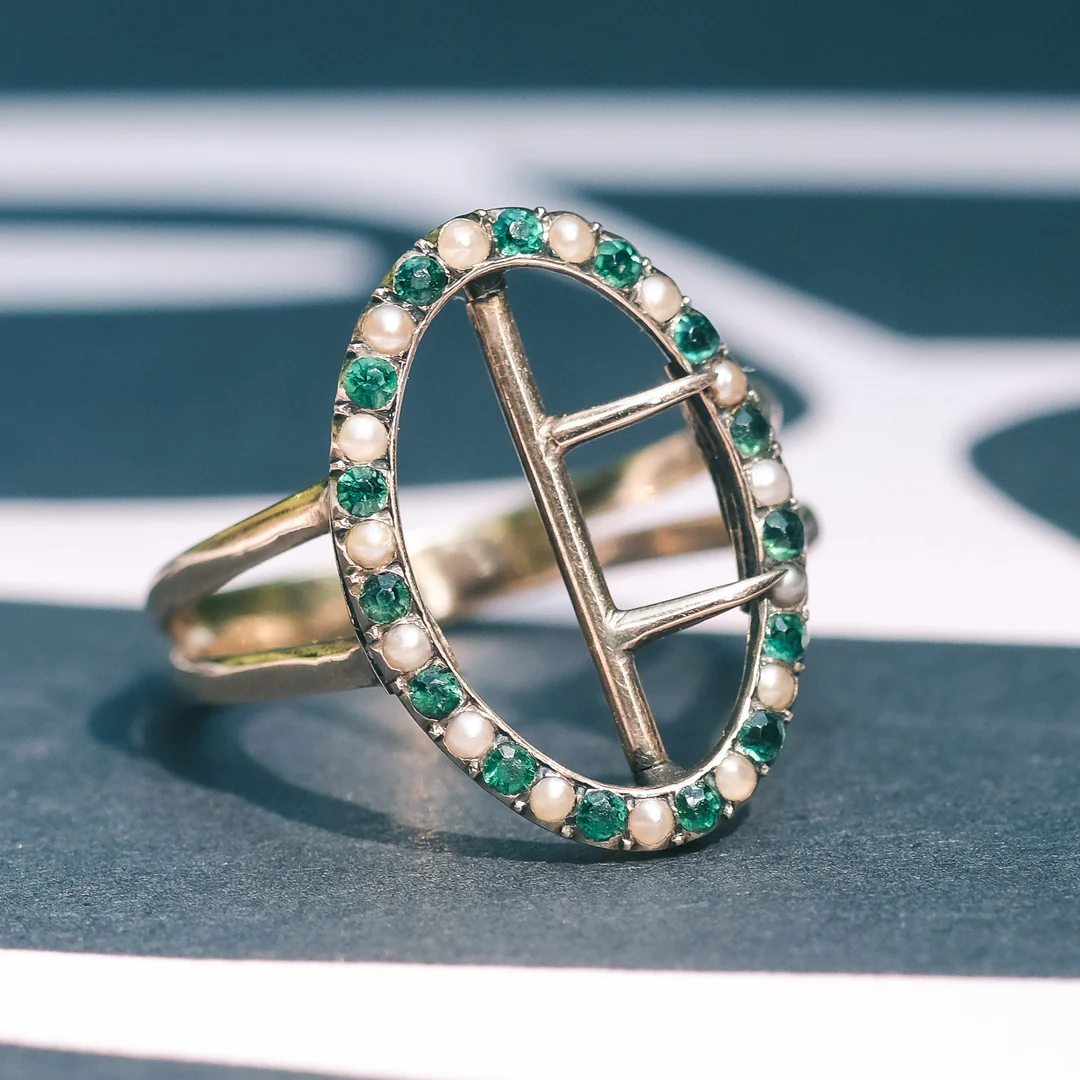EMERALD

Brazilian Emeralds in a Quartz-Pegmatite Matrix.
The Facts
Emeralds are a soft stone, and tend to have numerous inclusions and surface-breaking fissures, often described as the jardin due to their mossy appearance. Unlike diamonds, where a ten times magnification known as the loupe standard is used for assessing clarity, emeralds are graded by eye; therefore, if an emerald has no visible inclusions to the naked eye, it is considered flawless. Due to their soft and brittle nature, stonecutters in the 16th century came up with the emerald cut- a new way of cutting emeralds which reduced the pressure applied to the stone during the cutting process and prevented chips in the gem. Characterised by a rectangular, step-cut shape with elongated proportions, beveled corners, and a large table, the emerald cut soon caught the attention of diamond cutters, who began to incorporate it for diamonds as well. However, the actual term ‘emerald cut’ was not used until the 1920s, with the sharp increase in popularity of the cut. This era was characterised by the Art Deco movement and its focus on clean lines and symmetry, and over 100 years on, the popularity of the emerald cut as an engagement ring centrepiece is still yet to wane.

Vintage Emerald 'Picture Frame' Ring, Lost Owl Archive.
The earliest traces of the emerald date back to 4000 BC where they were traded in the markets of Babylon, with Egypt acting as the primary source of the gemstone until the 1500s CE when the Spanish began their voyages to the New World. In search of treasure, plunder, and glory, the Spaniards conquered the Muzo people of modern-day Colombia and seized their mines as spoils of war and, due to their superior quality, Colombia quickly overtook Egypt as the hotspot for emerald mining. The emeralds were particularly valued for their vibrant green colour and relative clarity which is a result of the unique process by which the crystals are formed. Unlike the deposits found in North Carolina or Russia, for example, which occur in metamorphic rock, Colombian emeralds are formed in fissures in sedimentary rocks such as limestone or black shale. Since they do not form inside a rock containing other minerals, they tend to have fewer inclusions, resulting in more transparent gems.
Colombia remains the world’s largest producer of emeralds today, constituting up to 95% of global production in some years, and is credited with producing some of the world’s most remarkable emeralds. The Patricia Emerald, for example, was recovered from the Chivor Valley mines in 1920 and weighs in at an impressive 632 carats. While all emeralds are prized for their green colour, the uniformity of the colour distribution combined with its exceptional clarity infuses the Patricia Emerald with an intense green colour that appears to glow from within.

The Patricia Emerald, Recovered From The Chivor Valley Mines in 1920.
The Legend
Pliny the Elder, describing the emerald in his Natural History - “…nothing greens greener”
St. Hildegard of Bingen - “All the green of nature is concentrated within the Emerald.”
Marcus Aurelius - "No matter what anyone says or does, my task is to be emerald, my colour undiminished."
Continuing our concentration on colour, green is generally regarded as the colour most beneficial for sight, so the emerald has been ascribed great curative power relating to eye stress and strain. Its’ colour also reflects the new growth of spring, signalled by the vibrant green of leaves and grass, making it the perfect choice of a birthstone for the month of May.
Throughout the ages, the emerald has been credited with many talismanic properties. Its most valuable power was perhaps bestowing the wearer with the ability to predict future events, when placed under the tongue. It was also considered as a revealer of truths, holding the ability to cut through all illusions and spells and reveal the truth or falseness of a lover’s oath. The emerald was also stated to sharpen wits and quicken intelligence, leading some to believe that it could even dampen lust by clearing the head enough to recognise the truth about objects of infatuation.

Ancient Roman Gold and Emerald Necklace, Dated 1st-2nd Century CE.
Around the time of the Spanish conquest, ancient tales of legendary cities of fabulous wealth, with entire temples made of precious gems and plants dripping with emeralds and rubies, were circulating. Indeed, when the Spaniards arrived in the New World and discovered the abundance of emeralds and gold, it is no wonder that they believed they had found these treasured cities of legend.
Cleopatra is perhaps the most famous historical figure to cherish the emerald. The gemstones were considered sacred symbols of fertility and immorality and were used both in jewellery and in the Egyptians’ elaborate burials, with the stones often being buried alongside monarchs as a symbol of protection. Cleopatra adorned herself and her palace with emeralds, gave them as gifts to foreign dignitaries, and even claimed ownership of all emerald mines in Egypt during her reign. In fact, the emerald mines in Upper Egypt are still known as ‘The Mines of Cleopatra’ today.
The Specifics
Composition: Beryllium Aluminium Silicate (Be3Al2(SiO3)6)
Crystal system: Hexagonal
Lustre: Vitreous
Colour: Green
Inclusions:
Hardness: 7.5, Brittle
Refractive Index (RI): 1.57 to 1.60
Transparency: Transparent to translucent

Victorian Emerald & Pearl Buckle Ring, Available Now.

